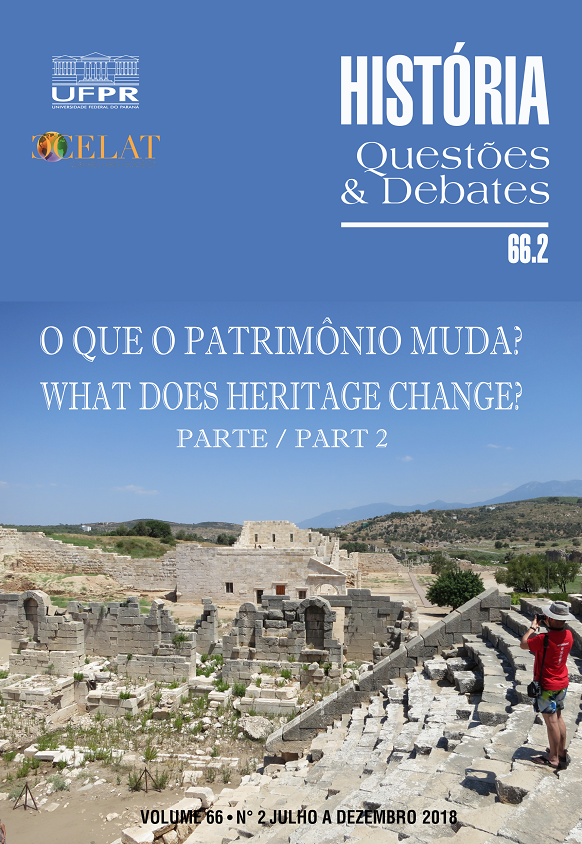CRIAÇÃO DE UM ESPAÇO COMEMORATIVO EM UM CEMITÉRIO LOCALIZADO EM UMA PLANTAÇÃO JESUÍTA DE CANA-DE-AÇÚCAR NA GUIANA FRANCESA
DOI:
https://doi.org/10.5380/his.v66i2.60817Palavras-chave:
comemoração, escravidão, Jesuítas, plantação Loyola, Guiana francesaResumo
Este artigo reflete sobre o processo de criação e desenvolvimento de um espaço comemorativo dentro de um sitio arqueológico: a plantação Loyola na Guiana francesa. Nós criamos este espaço para o reconhecimento dos escravos que viveram e morreram na
plantação, para demostrar compaixão com os descendentes de escravos, bem como para provocar uma discussão sobre a história do período colonial. A memoria da escravidão é um assunto sensível para dos residentes da região, cuja maioria é descendente de escravos. A partir de vinte anos de pesquisa na plantation Loyola e seu cemitério, apresentamos aqui várias questões que encontramos no processo de apropriação do espirito do lugar pela população local.
A plantação está localizada à 10 km de Cayenne, capital da Guiana francesa. Durante o domínio jesuíta, a plantação media mais de 1000 hectares, e chegou a ter cerca de 500 escravos trabalhando na produção de açúcar, café, índigo, e rum, entre outros produtos, supervisionados por alguns missionários. Depois de ter descoberto sepulturas no cemitério, onde aproximadamente 1000 escravos descendentes de Africanos, povos indígenas, colonos, e missionários foram enterrados, decidimos criar um espaço memorial para comemorar os escravos que viveram e foram enterrados na plantação. Inspirando-se numa ilustração dos anos 1730, erigimos uma cruz do Calvário no centro do cemitério, no âmbito de criar discussões relevantes com a população local. Esta ação teve como efeito de produzir uma resposta imediata da população local, e o cemitério tornou-se um ponto central para a discussão. Curiosamente, nossa intenção provocou uma reação visceral dos agentes locais do governo francês.
Downloads
Publicado
Como Citar
Edição
Seção
Licença
Direitos Autorais para artigos publicados nesta revista são do autor, com direitos de primeira publicação para a Revista. Em virtude da aparecerem nesta revista de acesso público, os artigos são de uso gratuito, com atribuições próprias, em aplicações educacionais e não-comerciais.
Os textos da revista estão licenciados com uma Licença 
Creative Commons Atribuição-NãoComercial-CompartilhaIgual 4.0 Internacional.



